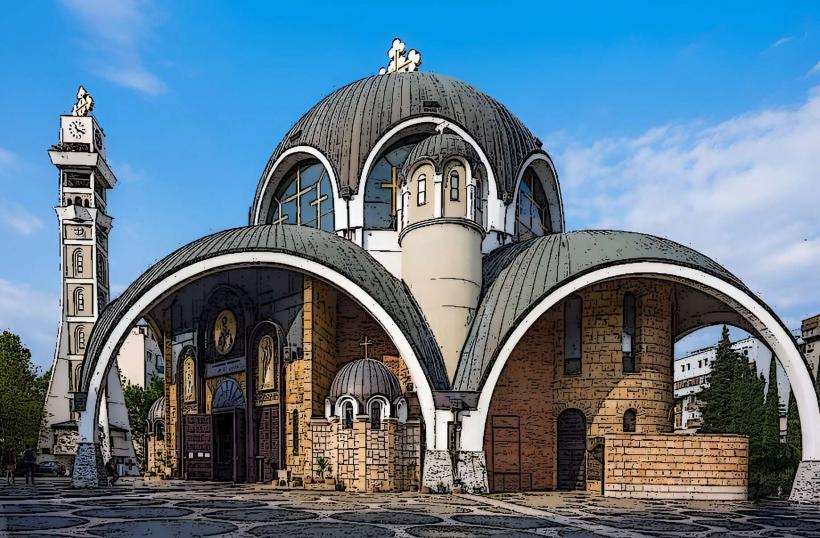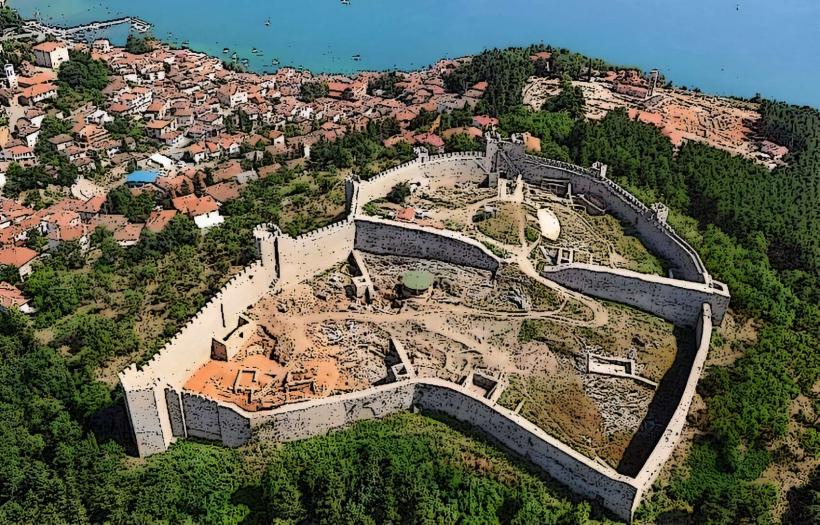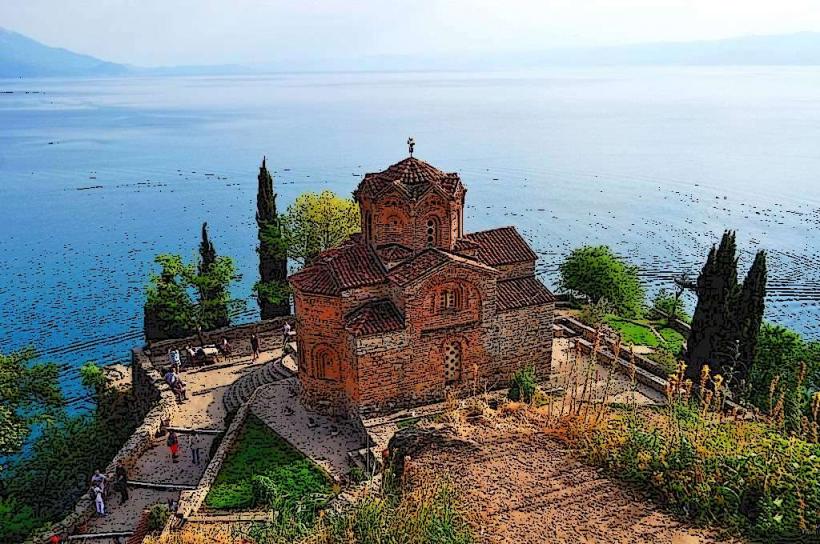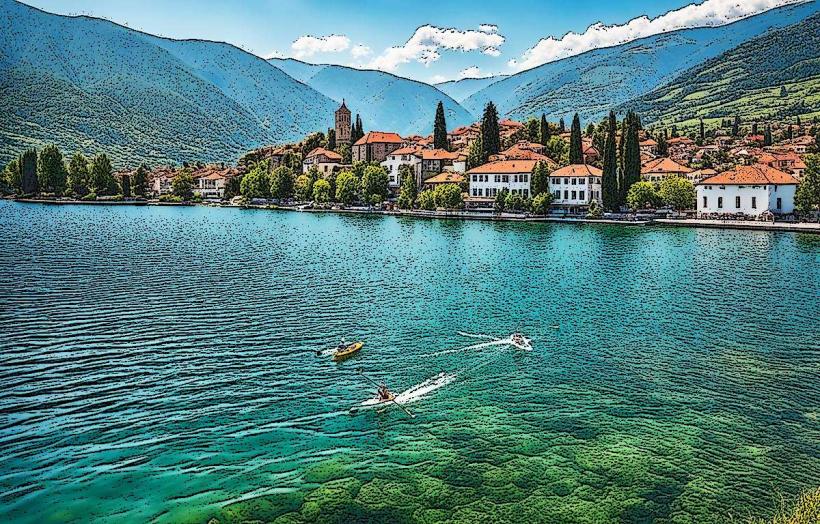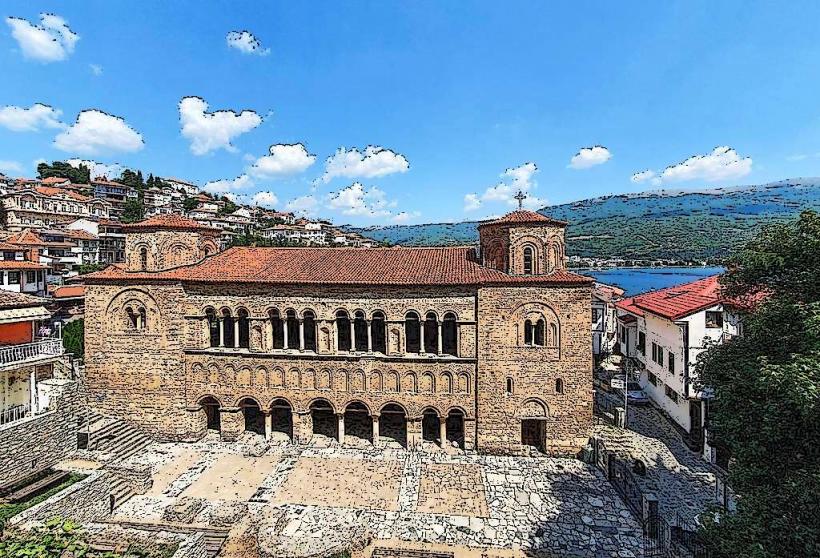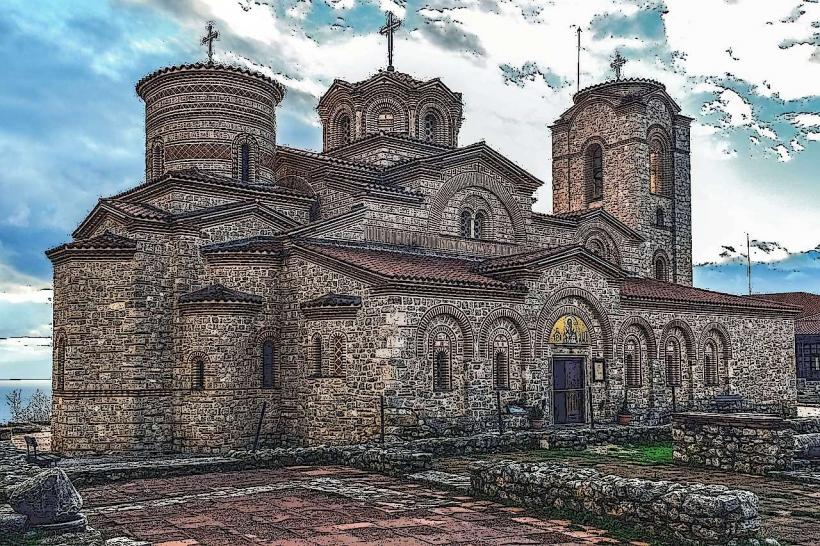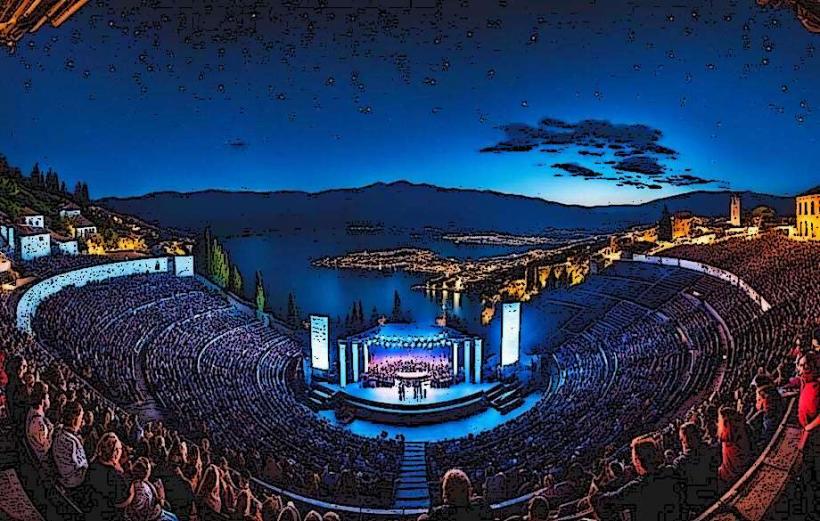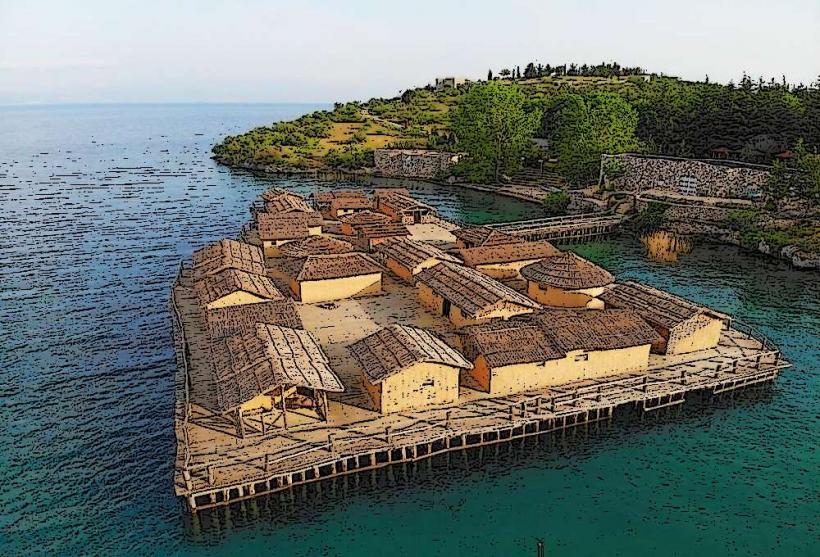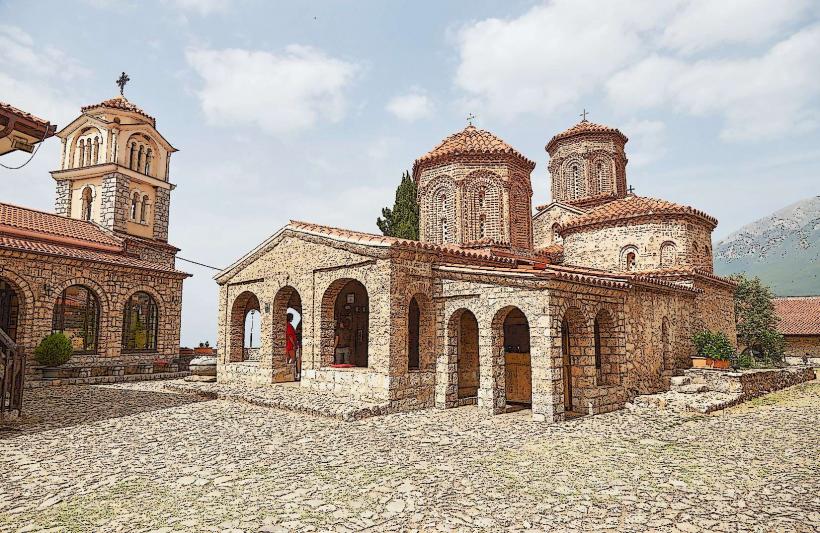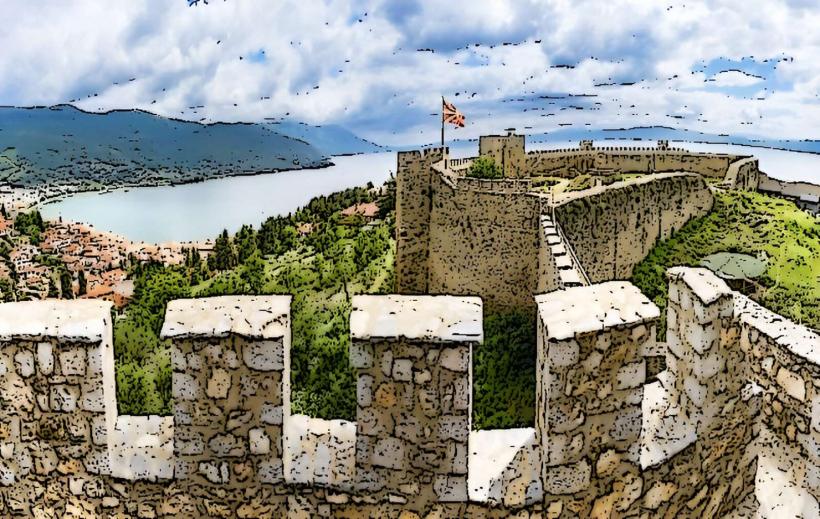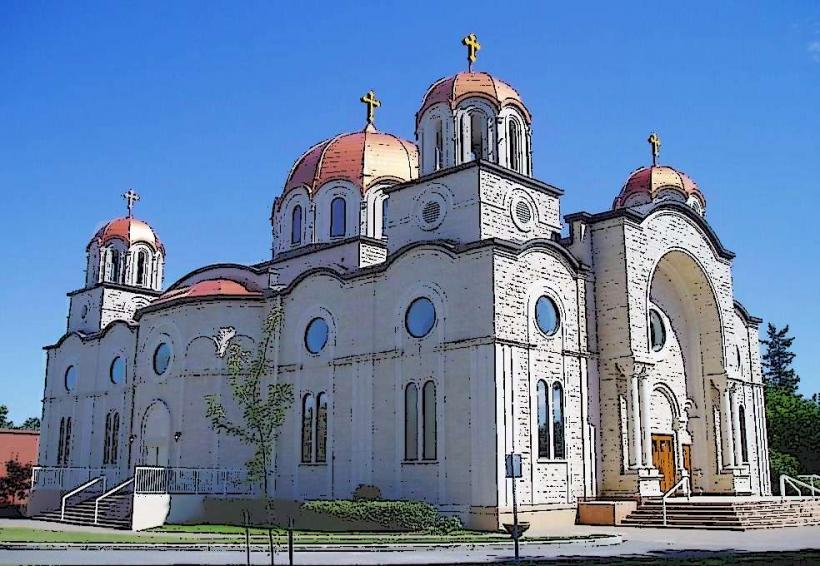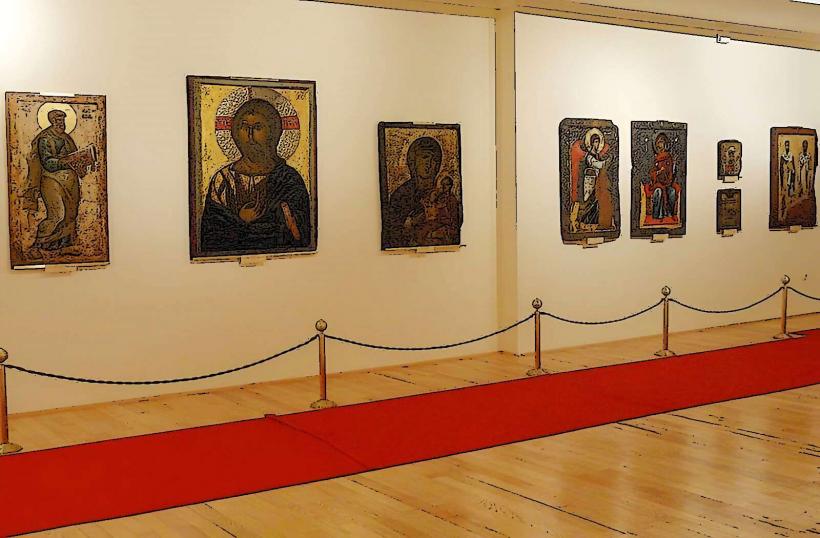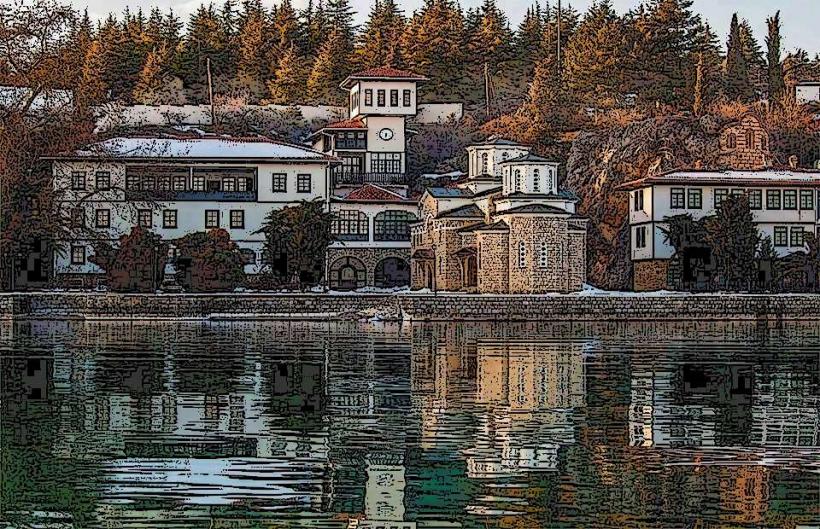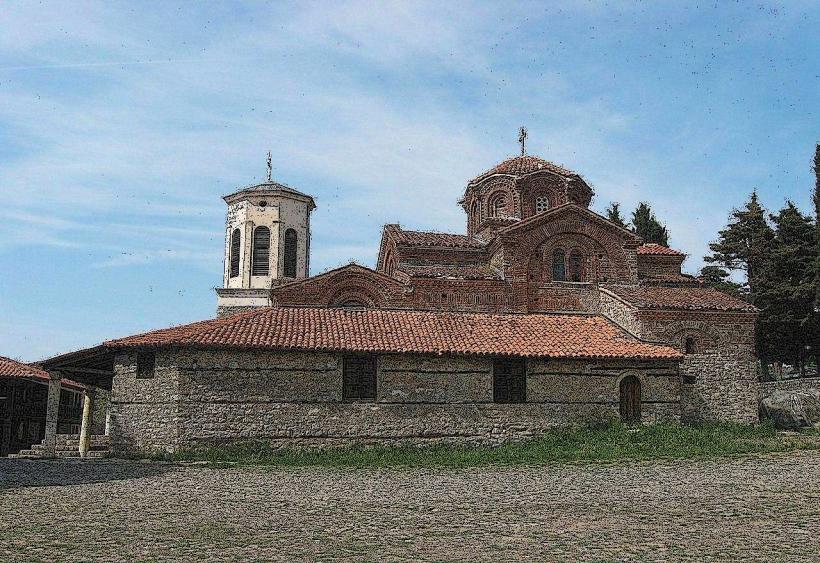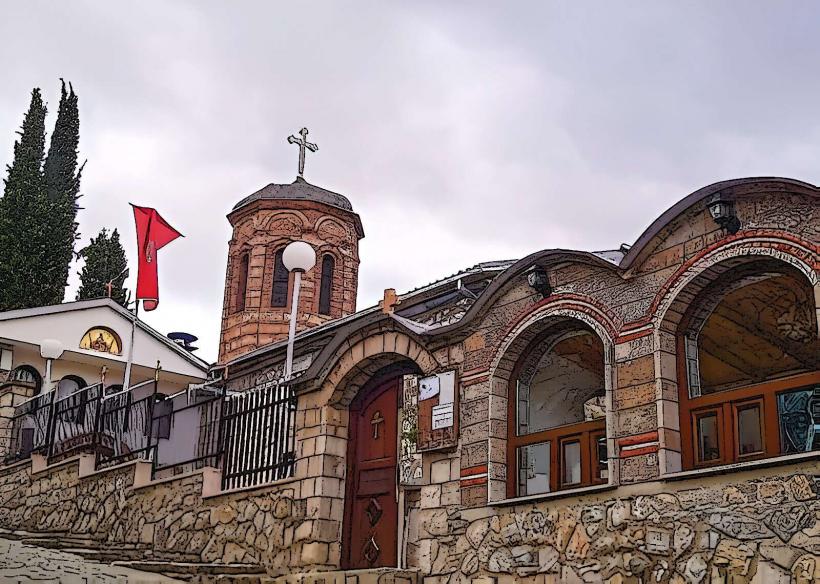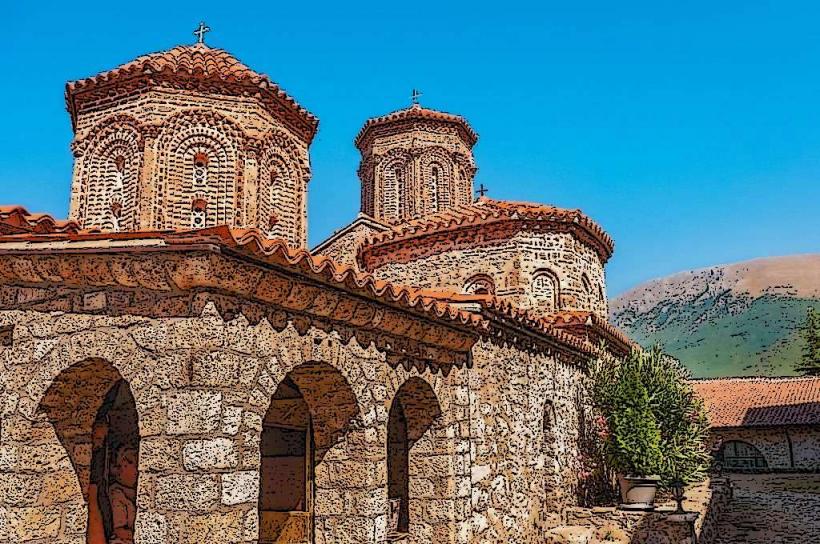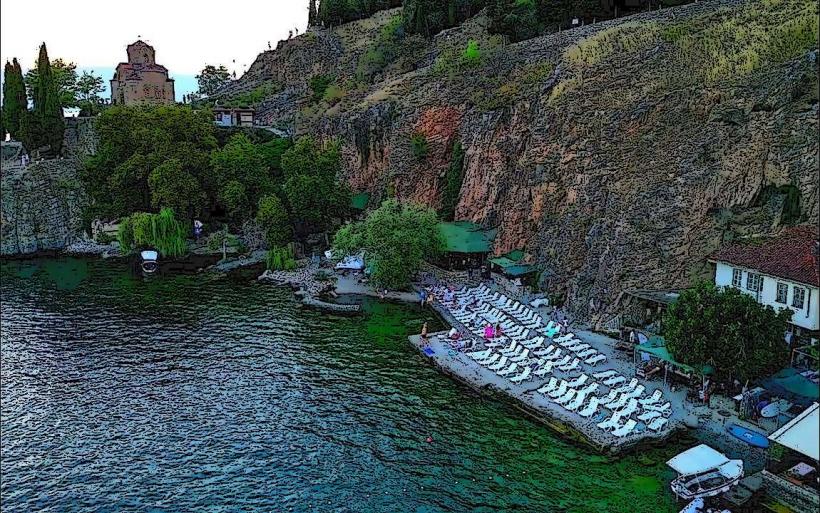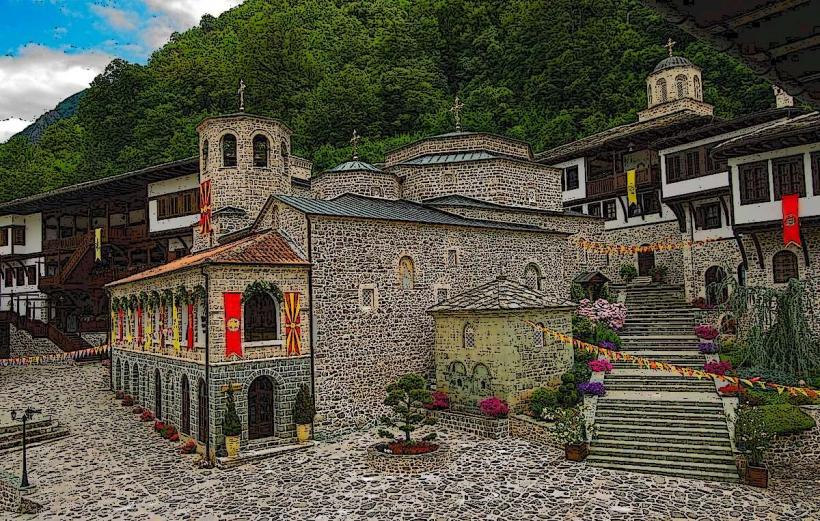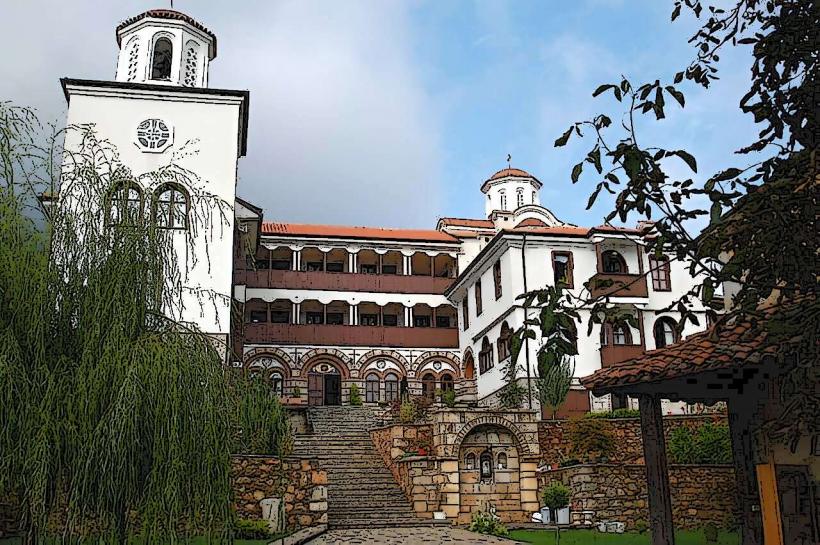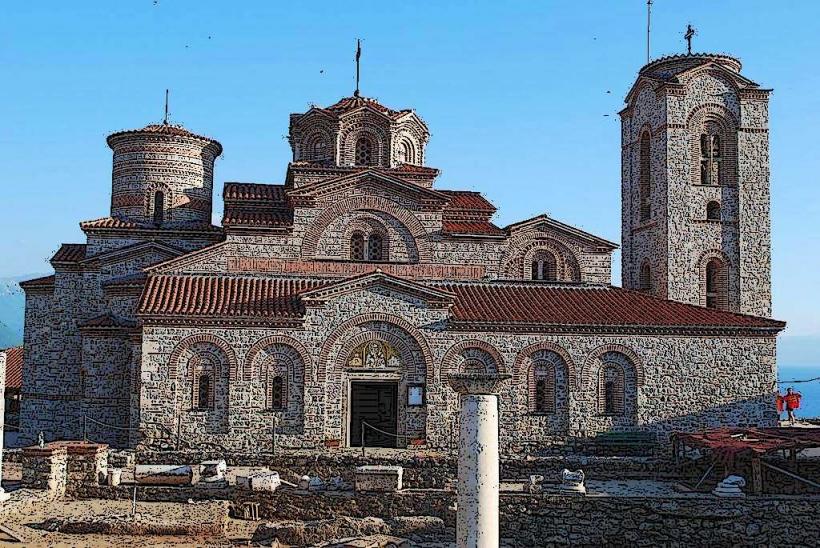Information
Landmark: Robev HouseCity: Ohrid
Country: North Macedonia
Continent: Europe
Robev House is a historic building located in the Old Bazaar of Ohrid, North Macedonia. It is one of the most important examples of traditional Ohrid architecture and offers a glimpse into the lifestyle and cultural heritage of the Ohrid region during the Ottoman period.
Overview:
- Location: The house is situated in the Old Bazaar area of Ohrid, a UNESCO World Heritage-listed site known for its well-preserved Ottoman architecture, historical buildings, and narrow, winding streets.
- Architecture: Robev House is an excellent example of Ottoman-era architecture, combining elements of both Ottoman and traditional Macedonian styles. It features typical characteristics such as wooden balconies, arched windows, and decorative details that reflect the local building traditions.
Historical Significance:
- Robev Family: The house is named after the Robev family, a prominent family in the region. The family played a significant role in the local culture and economy during the Ottoman period. They were known for their involvement in the trade and crafts, and the house reflects their wealth and social standing.
- Ottoman Period: Built during the 18th century, Robev House is a testament to the architectural and cultural influences of the Ottoman Empire on Macedonia. During this time, Ohrid was a significant cultural and commercial center, and its architecture reflects the blend of Ottoman and local Macedonian traditions.
Architecture and Design:
- Exterior: The house is a two-story building with a stone foundation and wooden upper floors. The façade features arched windows, wooden balconies, and decorative details typical of the Ottoman architectural style. The combination of stone and wood is characteristic of Ohrid's traditional buildings.
- Interior: The interior of the house is equally impressive, with decorative ceilings, traditional furniture, and an arrangement of rooms that reflect the lifestyle of the time. The flooring and decorative elements inside the house include intricate wooden carvings and decorative stucco work, which were common in homes of affluent families during the Ottoman period.
- Courtyard: Like many traditional Macedonian houses, Robev House has a courtyard that serves as a private outdoor space, typical of homes built during this period.
Museum:
Today, Robev House serves as a museum, showcasing the history, culture, and lifestyle of Ohrid during the Ottoman era. Visitors to the museum can explore the house and see various exhibits related to local history, culture, and traditional crafts. Some of the key highlights include:
- Historical Artifacts: The museum contains artifacts from the Ottoman period, including furniture, ceramics, and textiles that were used by the Robev family and other prominent families in the region.
- Traditional Crafts: The museum often displays exhibits on traditional Macedonian crafts, such as carpet weaving, pottery, and metalworking, which were central to Ohrid's economy during the Ottoman period.
- Cultural Exhibits: The museum also provides insight into the cultural life of Ohrid, highlighting its importance as a religious, cultural, and commercial hub during the Ottoman and pre-Ottoman periods.
Visitor Experience:
- Guided Tours: Visitors to Robev House can often participate in guided tours, which provide detailed information about the history of the house, the Robev family, and the cultural context of Ohrid during the Ottoman period.
- Cultural Insight: A visit to Robev House offers a deep dive into the cultural heritage of Ohrid, especially regarding the Ottoman influence on the city. The house itself is a reflection of the wealth and cultural sophistication of Ohrid's elite families during the time.
- Photographs and Souvenirs: The museum's setting, with its traditional architecture and interior, offers numerous opportunities for photography. Additionally, visitors can purchase souvenirs that reflect the cultural heritage of the area, such as traditional Macedonian handicrafts.
Conclusion:
Robev House is not only an architectural gem of Ohrid but also a valuable cultural and historical site. Its well-preserved features provide a glimpse into the life of a wealthy family during the Ottoman period and reflect the city's rich heritage. As a museum, it helps visitors appreciate the local history, traditional Macedonian craftsmanship, and the cultural dynamics of Ohrid during a time of significant Ottoman influence. Whether you are an architecture enthusiast or someone interested in Macedonian history, Robev House offers an enriching experience in the heart of Ohrid's Old Bazaar.

